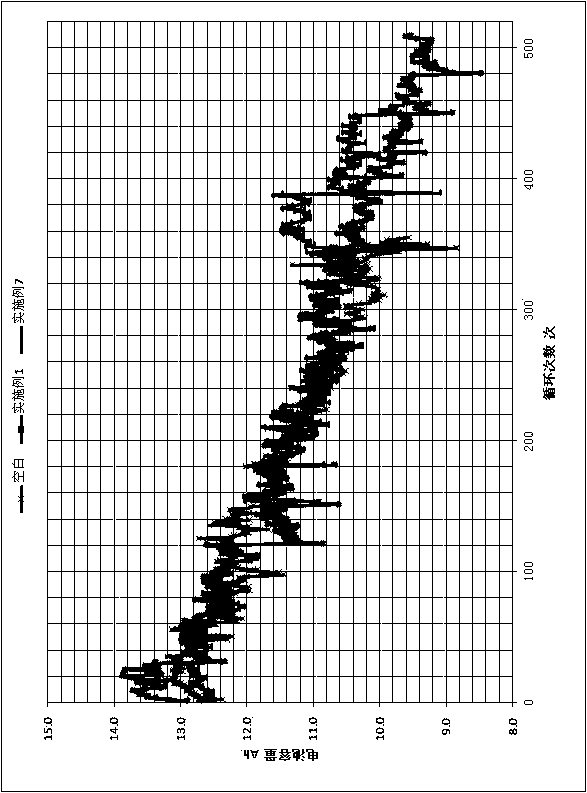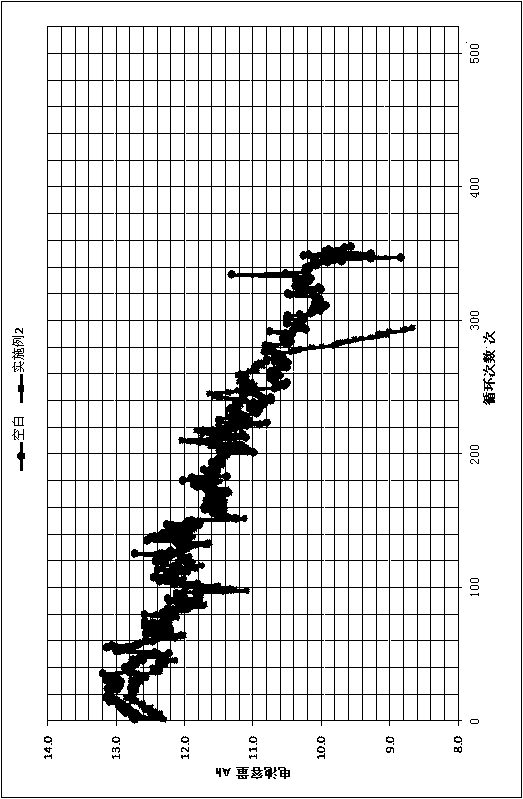Lead-acid storage battery negative electrode lead paste
A technology of lead-acid battery and negative electrode paste, which is applied in the direction of lead-acid battery electrodes, battery electrodes, circuits, etc. It can solve the problems of bad influence of the battery formation process, the amount of addition should not be too high, and battery capacity decline, etc., to prolong the life of the battery , prolong the service life, overcome the effect of softening
- Summary
- Abstract
- Description
- Claims
- Application Information
AI Technical Summary
Problems solved by technology
Method used
Image
Examples
Embodiment 1
[0021] A lead-acid battery negative lead paste, the mass fraction of each component of the negative lead paste is: lead powder 79.0%, sulfuric acid 6%, short fiber 0.1%, deionized water 11.5%, calcium phosphate 1%, zinc phosphate 1% , carbon 0.3%, lignin 0.3%, humic acid 0.1%, barium sulfate 0.7%.
Embodiment 2-9
[0023] A kind of lead-acid accumulator negative electrode lead paste, the formula of this negative electrode lead paste is shown in Table 1.
[0024] Table 1
[0025]
[0026] The above components and paste were made into plates, and the experiments were carried out after assembling the battery. The specific experimental conditions are shown in Table 2 (take 12V12Ah battery as an example), and the life curve is as follows figure 1 and figure 2 shown. according to figure 1 , figure 2 From the data in Table 2, it can be seen that the initial capacity, charge acceptance and cycle life of the battery are not affected, but the cycle life is significantly improved.
[0027] Table 2
[0028]
[0029] Blank formula (mass fraction): 6% sulfuric acid, 0.1% short fiber, 11.5% deionized water, 0.3% carbon, 0.3% lignin, 0.1% humic acid, 0.7% barium sulfate, and the balance is lead powder.
[0030] The lead-acid battery negative lead paste and the paste prepared in each embod...
PUM
 Login to View More
Login to View More Abstract
Description
Claims
Application Information
 Login to View More
Login to View More - R&D
- Intellectual Property
- Life Sciences
- Materials
- Tech Scout
- Unparalleled Data Quality
- Higher Quality Content
- 60% Fewer Hallucinations
Browse by: Latest US Patents, China's latest patents, Technical Efficacy Thesaurus, Application Domain, Technology Topic, Popular Technical Reports.
© 2025 PatSnap. All rights reserved.Legal|Privacy policy|Modern Slavery Act Transparency Statement|Sitemap|About US| Contact US: help@patsnap.com



